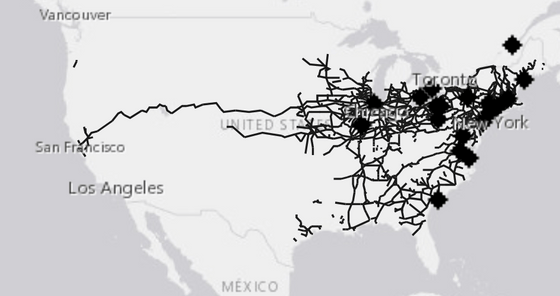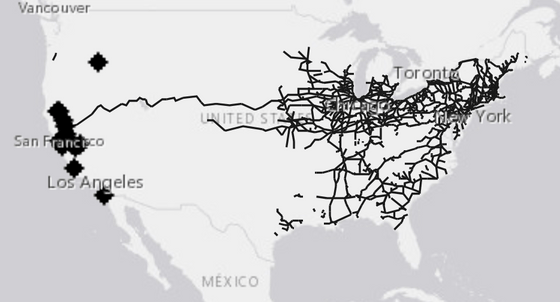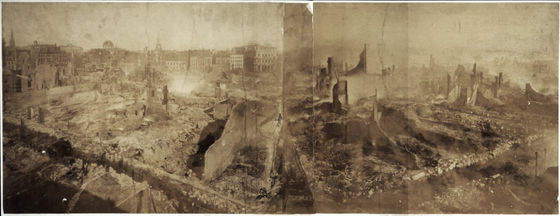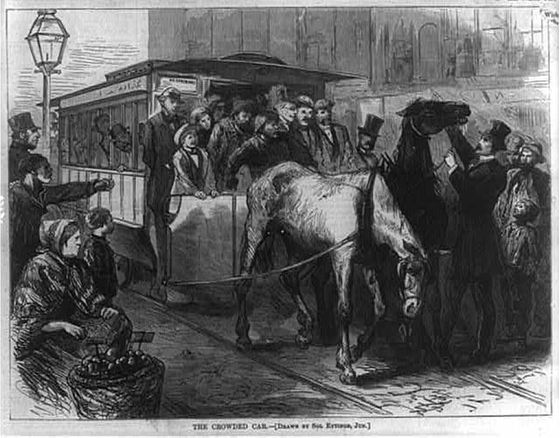How did the 'equine flu' that hit the United States during the western pioneer turmoil the American economy?

The new coronavirus infection (COVID-19), discovered at the end of 2019, is still rampant as of December 2020, disrupting socioeconomics and the lives of many. Ernest Free, a professor of history at the University of Tennessee, about '
How a flu virus shut down the US economy in 1872 – by infecting horses
https://theconversation.com/how-a-flu-virus-shut-down-the-us-economy-in-1872-by-infecting-horses-150052
◆ Equine influenza epidemic
In 1872, a sudden energy crisis struck the United States in the midst of the western pioneer era. It is the epidemic of 'equine influenza' that infects horses and donkeys, which was the driving force of the American economy at that time. The fall of a horse, which was an indispensable livestock not only for transporting people and goods but also for manufacturing and agriculture, caused a serious paralysis in the US economy, which was as bad as a large-scale power outage in modern times. received.
Play the animation below to see the equine influenza epidemic in the United States between 1872 and 1873.
In the figure, the black line is the American rail network at that time, and '◆' indicates the place where the outbreak of equine influenza was reported. Early equine influenza broke out in the eastern United States around October 1872.

Then, in just one month, equine influenza spread to the eastern United States ...

We have expanded into the Midwest and South of the United States along the railroad network.

Then, the following year, cases of onset began to be reported in the western United States. Thus, the equine influenza outbreak in the eastern United States spread throughout the United States via railroads.

The first confirmed equine influenza infection in North America was a horse grazing in the suburbs of Toronto, Canada, in September 1872. The US government immediately regulated Canadian horses, but a month later a 'Canadian horse disease' epidemic broke out in the border areas. Then, around December, horses with the same disease were reported on the Gulf coast of the Gulf of Mexico in the southern United States, and on the west coast of the United States in 1873 the following year.
◆ Effects of equine influenza
Horses with 'Canadian horse disease' showed typical equine influenza symptoms such as coughing, fever, and staggering. In addition, horses with equine influenza sometimes weakened and collapsed. One theory is that of the approximately 8 million horses estimated to have been in North America at the time, 2% died of equine influenza.
It is known that equine influenza is caused by a virus in modern times, but at that time, the bacterial theory was the mainstream. Therefore, horse owners tried to disinfect the stables, switch food to good food, and put a brand new blanket on the horses to stop the spread of the bacteria, but it did not lead to a fundamental solution. ..
In the United States at the time when veterinary medicine was underdeveloped, a joke was posted on the paper that 'a horse oppressed by hard labor was suddenly tendered and died in shock', as well as ginger, gin, tincture containing arsenic, and eventually healing. Various folk remedies using dubious items such as harnesses with palm prayers have been released.
The inability to transport by horses disrupted the distribution of coal, which is essential in winter, and fuel costs soared. In addition, the economy was in a state of paralysis, with agricultural products imported from other countries decaying at the wharf, and undelivered goods flooding the stops due to the refusal of trains to stop in cities.
In addition, the Great Boston Fire of 1872, which occurred on November 9, 1872, was unable to pull a heavy pump truck to a horse and delayed the arrival of firefighters at the scene, which is said to have contributed to the spread of damage. In the wake of these events, people realize that 'horses are not just private property of individuals, but a power source of great society, and their loss means that people of all classes will suffer enormous damage.' It is said that it came to be done.

◆ Aftermath of equine influenza
Equine flu was a serious threat to horses, but it was not uncommon for unwilling owners to abusively kill horses at the time.
Henry Bergh, the founder of the American Society for the Prevention of Cruelty to Animals (ASPCA), was one of those who was distressed by the short life of American horses. Berg, who founded ASPCA, America's oldest animal protection organization in 1866, actively lobbyed the New York City Council with his wealth of wealth and literary talent to enact America's first animal cruelty prevention law. Was successful.
With a top hat and a top hat, Berg went out to a crossroads in New York to stop the carriage to check the health of the horse, use the law as a weapon to order the treatment of sick horses, and bring the coachman to trial. .. In response, some critics have ridiculed Berg as 'a misguided animal lover who values horses more than humans' and threatened to sue for obstruction of business, but many supported Berg. It is said that.

by Library of Congress
Americans were worried that horses would disappear from their side forever, but the equine flu naturally subsided and urban function gradually recovered. With the invention of the internal combustion engine and the electric tram, the problem that the social structure depends on horses was eventually solved.
Berg's work, on the other hand, has inspired Americans to remind Americans that horses are not an emotionless machine, but an essential partner in the construction and operation of modern cities. At Berg's tomb at the Greenwood Cemetery in New York City, there is a statue of a person stroking a horse surrounded by animals.
.jpg)
Related Posts:
in Creature, Posted by log1l_ks







